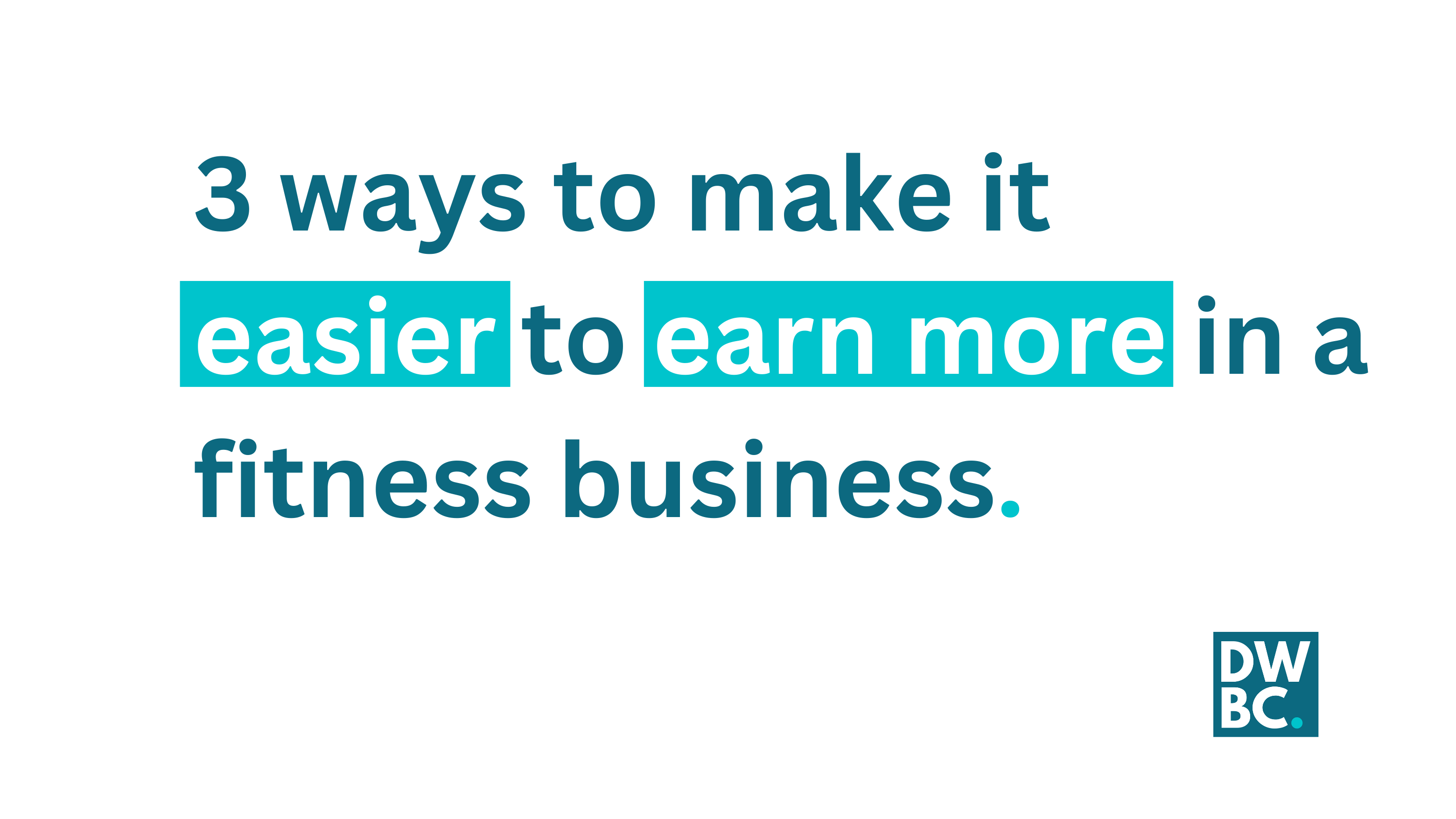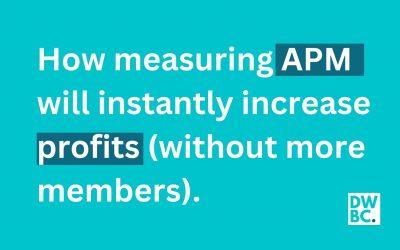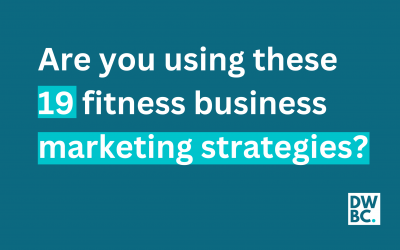Summary:
- Start with a problem, not just an idea, for a better business foundation.
- Avoid targeting people with barriers to your service, like time or money constraints.
- Hard work alone isn’t enough; ensure your effort is aligned correctly.
- Push your business “downhill” by pursuing easier, high-reward strategies.
- Identify what comes easily to you, then apply focused effort in that direction.
As fitness business owners, we make a living out of making things difficult for our clients. After all, when you do hard stuff, good things often happen.
But way too many fitness business owners also make things unnecessarily hard for themselves.
Owning a business is really tough. I think we can all agree on that. Whether you’re a solo PT, or own a chain of gyms, this game is hard.
And yet so many business owners I mentor and work with seem determined to make it even harder.
There’s a general sense among a lot of business owners that they’ve never really got a return on their investment, they’ve never really been rewarded for the hard work they put in.
Let’s define the problem. It’s not that business is hard, the problem is, everyone seems determined to start a difficult business. It’s already hard, we don’t need to make it harder.
So let’s talk about how to make business easier, and there are x things you can do.
One. Start with a problem, not an idea.
Let’s begin at the beginning. The beginning of your business.
Most people begin with an idea. They assume it’s a good idea, but they really have no evidence to back that up. They build a business around that idea – investing time and money. Then they go looking for people who want to pay them money for this idea. At some point in the future they realise that not enough people are paying them not enough money, and they’re finally met with the truth that the idea they had was, in fact, not a good idea. But by then, it’s too late. The costs they’ve sunk into the business (time, money and effort) chain them to that business. The chances of the business surviving longer than five years are slim. And in most cases, if they do survive past five years, it’s probably out of stubbornness, not because the business has potential.
Let’s jump back a moment. That approach began with an idea you had.
And because of that, the business was doomed to fail.
Instead of the spark for a business being an idea YOU have, it should instead be a problem THEY have. ‘They’, being your potential future clients. Your avatar. Your target demographic or psychographic. The type of person who’s going to be paying you money in the future.
Look at AirBNB. They started with a problem. Hotels were sold out for a popular design conference in San Francisco. They identified a need – people looking for temporary, affordable, and convenient places to stay – and their solution was to rent out air mattresses in their apartment.
Compare that with WeWork, who were looking to provide flexible workspaces. They prioritised the idea of reshaping the way people work, often pushing growth aggressively without addressing the actual needs and problems of their customers.
Fast forward to 2024, and AirBNB’s market capitalisation has grown to $86.3 billion, while WeWork is in a rapid decline down to $44 million.
But these are major global companies. Let’s bring this a little closer to home. Grant Hancock is an Exercise Physiologist who started up ‘You Move Health and Rehab’ in Emerald, a rural town in central Queensland with a population of around 15,000 people. I’ve been mentoring Grant for about a year and a half now. Prior to starting his business, he identified that there was no one within hundreds of kilometres who offered what he was proposing, yet a lot of people needed his help. Fast forward to today, and he’s got a waiting list of over 150 people, and he’s just hired two new full time Exercise Physiologists who are moving to the rural town to help work through this backlog.
So this is the first way to make business easier. Don’t start with an idea. Start with a problem. Then, work out what you think is the best solution to that problem. That ‘best solution’ is your business model. The ‘best solution’ replaces your idea as the spark to start a successful business.
The most successful businesses and projects I’ve started have always been born from a single person asking me to solve their problem.
Two. Don’t target people with inbuilt barriers to what you’re offering.
The type of person you choose to target is perhaps the most important decision you’ll ever make in business.
And that’s because different types of people, different psychographics, have different constraints placed on them. Constraints like time, motivation and finances.
So why is it that so many fitness businesses target busy, time poor people? They’re literally targeting the people who don’t have time to use their service. This is an incredibly difficult position to build a business from. You’re behind the eight ball before you even begin.
According to an Australian Institute of Health and Welfare report, 37% of adults claim they don’t have time to exercise. Trying to sell exercise to people who don’t have time for it is like trying to sell a roast chicken to a vegetarian. It doesn’t align with their reality, making it an uphill battle to convert them into consistent clients. To sell a roast chicken to a vegetarian, you first have to overcome the fact they don’t eat meat. Once you’ve overcome this, then they become a potential customer. To sell exercise to someone who is time poor, you first have to overcome the fact that they don’t have time. Once you’ve overcome this, then they become a potential client.
So what’s the solution? What’s the better way? What’s the easier way.
If we look at time, motivation and finances as the three biggest barriers to exercise, how about we target people who don’t have those constraints?
If we target people who have plenty of time, are motivated to improve their health, and have the money to spend on it, we’re removing the constraints and making it much more likely we can build a successful business around this target client. We’re selling roast chicken to a carnivore.
Let’s continue the food analogy.
In 1996, McDonalds launched a premium burger, the ‘Arch Deluxe’. They were looking to target customers who wanted a high end product, and were hoping to attract a more sophisticated, adult customer base. Adjusted to today’s pricing, this burger would come in at $10 – two and a half times a standard $4 Maccas hamburger. $150 million of marketing later, McDonalds realised that their customers came to them because of their cheap, fast, convenient food. Mum and Dad didn’t want to spend over $50 to feed a family of four on the way home from footy training. McDonalds were trying to sell a premium product to people who didn’t have a premium budget.
So what’s a health and fitness industry example that you can use to model a successful business that removes the barriers to exercise.
Let’s take a look at Seniors Fitness, a clinical gym-based exercise physiology clinic in Bondi Junction in New South Wales. I’ve been mentoring the owner, Emily Moore, since November in 2023. I’ve already given you two clues for how this very successful business avoids inbuilt barriers to exercise. First, the name ‘Seniors Fitness’. And second, the location, Bondi Junction.
The mission of this business is to help people ‘age with confidence’ and generally speaking, older adults have more time to devote to their own health and fitness. 15% of the population in Bondi Junction are aged 65 or older, the average household income is 36% higher than the national average, and the median house price in Bondi Junction is around $2.5 million. Combine this with the fact that seniors are generally more motivated to take charge of their health, and Emily and her team have successfully designed a business that bucks the trend of catering for people with the constraints of time, motivation and finances. Seniors Fitness serves people with plenty of time, motivation to exercise, and the money to pay for it. It’s no surprise that this business has recently upgraded to a beautiful new modern clinic, is going on a hiring spree, and is undertaking a major state-wide expansion into aged care facilities and community health.
So this is the second way to make business easier. Don’t build a business that caters for people who have a barrier to using the service you offer.
Three: Effort is not enough.
The ‘hustle culture’ that’s so glamorised on social media brainwashes us to believe that if we just work harder, we’ll be successful. And sure, with all else being equal, our hard work will usually be rewarded.
But what’s not as often discussed by these hustling influencers is that if we apply our effort to the wrong thing, or in the wrong direction, it doesn’t really matter how hard we work.
John Mackey, the co-founder of Whole Foods Market said ‘If you think about how hard it is to push a business uphill, one answer is to start a different business, a business that you can push downhill’.
WeWork was pushing a business up hill by trying to popularise co-working spaces. McDonalds was pushing a business up hill by trying to sell premium burgers.
If you’re going to work hard, at least work hard in the right direction. In the words of John Mackey, find a business you can push down hill.
In his book, ‘This is Strategy’, the author Seth Godin tells us ‘Effort is often part of our work. But effort by itself is not a strategy.’ He’s also quoted as saying ‘The number on a car’s speedometer isn’t always an indication of how fast you’re getting to where you’re going. You might, after all, be driving in circles really quickly.’
Look at the history of Netflix. Before they became a streaming service, they were a DVD rental company. But they were pushing the business up hill. Competitors like Blockbuster and a reduced demand for DVDs meant that they had to work hard for minimal return. So they pivoted 180 degrees and became a streaming service, pushing their business down hill and getting a better return on effort.
Almost every business owner who approaches me to consult for their business is already a hard worker. I don’t need to turn them into a hustler. Often, all I do is spin them around 180 degrees so they can start pushing their business down hill, instead of up hill. I just redirect their effort so they can actually be rewarded for it.
If your only strategy is to work harder, you’re seriously limiting the reward you can get from your effort. You should constantly be checking in on yourself and asking, ‘is the way I’m spending my time aligned with the current focuses and priority for my business?’.
Ok, so I’ve told you what not to do – run a business that’s really difficult, that requires a lot of effort. So if that’s what you should avoid, what should you pursue? My recommendation would be to figure out what you’re really good at without trying… then try. What comes easy to you? Where can you excel with very little effort? First, identify that thing, then actually try at that thing. Try really hard. This is when it’s ok to hustle, because you know you’re hustling in the right direction – pushing a business down hill not uphill.
Here’s a reality check for you. If you’re doing everything you can, working as hard as you can, and it’s not working, your effort is pointed in the wrong direction. When you can’t try any harder, find a different path.
And that’s our third and final way to make business easier. Make sure if you’re working hard, you’re working hard on the right thing.
So if you feel like business is harder than it needs to be there are three things to do. Build a business that solves a problem, build a service for people who don’t have barriers to using it, and work hard on the right things.
If you enjoyed this, you’ll also enjoy there following, they’re some of my most popular articles:





